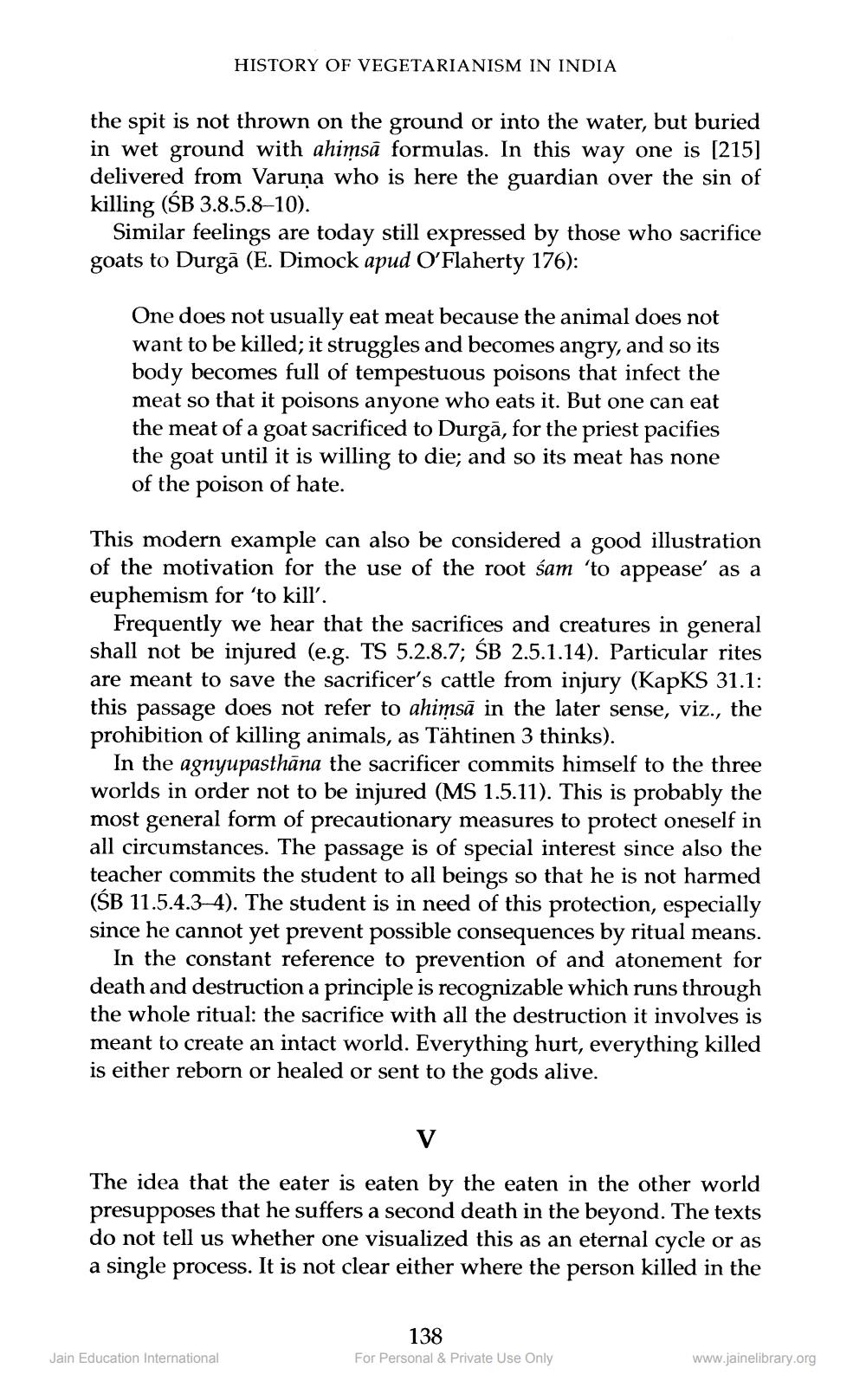________________
HISTORY OF VEGETARIANISM IN INDIA
the spit is not thrown on the ground or into the water, but buried in wet ground with ahimsā formulas. In this way one is [215] delivered from Varuņa who is here the guardian over the sin of killing (SB 3.8.5.8-10).
Similar feelings are today still expressed by those who sacrifice goats to Durgā (E. Dimock apud O'Flaherty 176):
One does not usually eat meat because the animal does not want to be killed; it struggles and becomes angry, and so its body becomes full of tempestuous poisons that infect the meat so that it poisons anyone who eats it. But one can eat the meat of a goat sacrificed to Durgā, for the priest pacifies the goat until it is willing to die; and so its meat has none of the poison of hate.
This modern example can also be considered a good illustration of the motivation for the use of the root sam 'to appease' as a euphemism for 'to kill.
Frequently we hear that the sacrifices and creatures in general shall not be injured (e.g. TS 5.2.8.7; SB 2.5.1.14). Particular rites are meant to save the sacrificer's cattle from injury (KapKS 31.1: this passage does not refer to ahimsā in the later sense, viz., the prohibition of killing animals, as Tähtinen 3 thinks).
In the agnyupasthāna the sacrificer commits himself to the three worlds in order not to be injured (MS 1.5.11). This is probably the most general form of precautionary measures to protect oneself in all circumstances. The passage is of special interest since also the teacher commits the student to all beings so that he is not harmed (ŚB 11.5.4.3-4). The student is in need of this protection, especially since he cannot yet prevent possible consequences by ritual means.
In the constant reference to prevention of and atonement for death and destruction a principle is recognizable which runs through the whole ritual: the sacrifice with all the destruction it involves is meant to create an intact world. Everything hurt, everything killed is either reborn or healed or sent to the gods alive.
The idea that the eater is eaten by the eaten in the other world presupposes that he suffers a second death in the beyond. The texts do not tell us whether one visualized this as an eternal cycle or as a single process. It is not clear either where the person killed in the
138 For Personal & Private Use Only
Jain Education International
www.jainelibrary.org




